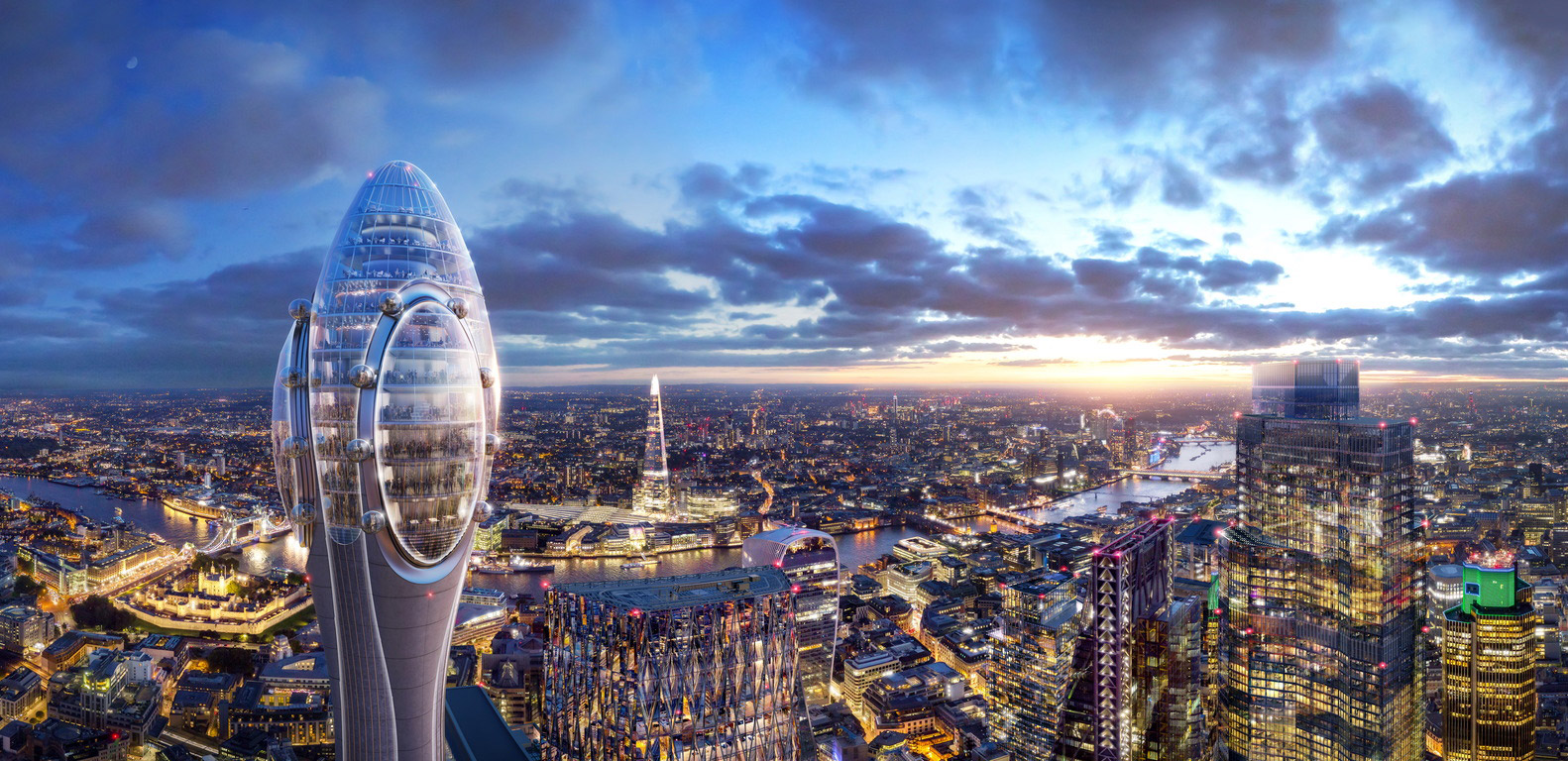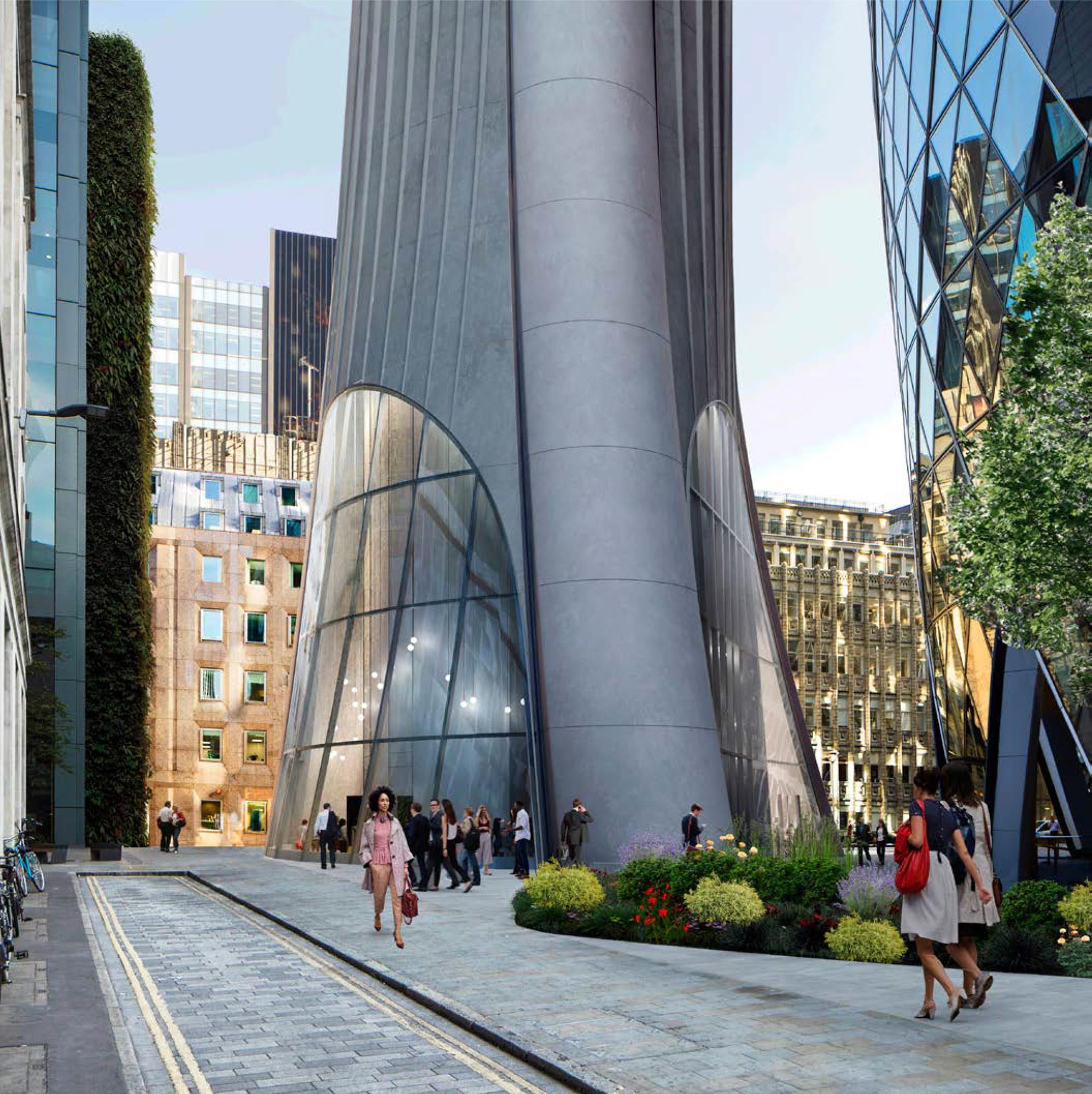It looks like the tug of war of approvals, blocks, and appeals for the Tulip, Foster + Partners’ skyscraping London observation tower, may soon be coming to an end. With a final decision from U.K. Secretary of State for Housing, Communities and Local Government Michael Gove scheduled to come before November 11, The Telegraph is reporting that Gove, despite his public misgivings against modernism and steel-and-concrete towers, will likely overrule an earlier veto and let the Tulip proceed.
First announced all the way back in 2018, it’s been a bumpy road to realization for what, if built, could become the tallest building north of the Thames and London’s second-tallest overall after Renzo Piano’s Shard. The 984-foot-tall, 31,100-square-foot observation tower places a multistory glass pod atop a windowless concrete stem (that has earned it some unfortunate comparisons), with a two-story retail podium at the base. Three Ferris wheels attached to the observation node would give thrill-seeking visitors unparalleled views of the surrounding city.
All of this would rise directly adjacent to another Foster + Partners’ project, the Gherkin at 30 Street Mary Axe, with the same developer: billionaire Jacob J. Safra of the J. Safra Group. Construction was originally supposed to have commenced in 2020.

Of course, that didn’t happen. In July of 2019, London Mayor Sadiq Khan issued a block of the project after it had won full approval from the City of London planning committee. He went so far as to call the tower “unwelcoming” and “poorly designed,” in a win for preservationists who were upset at the impact the Tulip would have on the city’s historic fabric and views of the Tower of London.
Things went quiet until January of 2020 when, three days before the six-month appeals window closed, the J. Safra Group filed a rebuttal and vowed to keep escalating their claims; Mayor Kahn responded in kind and assembled a $450,000 “war chest” for the Greater London Authority (GLA) to fight back with. (The agency, which enforces the London Plan dictating sustainable growth in the city, also came out against the scheme). In a letter to then-housing secretary Robert Jenrick, Kahn reiterated that no potential economic benefit from the Tulip could ever outweigh its damage to the city’s cultural and historical landscape, nor mitigate what he felt was a terrible ground-level presence.

A final ruling from Jenrick was expected in September, but he was unexpectedly “sacked” on September 15 after a cabinet shakeup by Prime Minister Boris Johnson. Then, a ruling was set for or before the aforementioned November 11 date for a decision by his replacement, Michael Gove. Now, according to The Telegraph, a decision in favor of granting planning permission is likely imminent. It’s unclear when the project would break ground assuming things do shake out that way, but a five-year construction timeline was anticipated when the Tulip was first announced.











